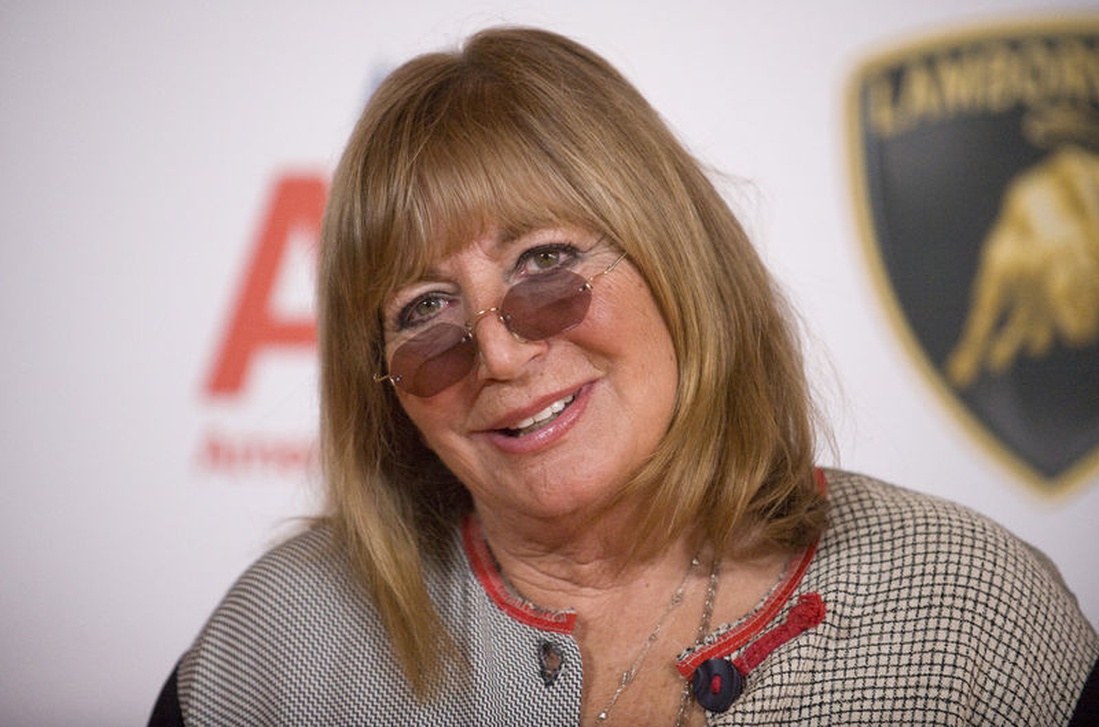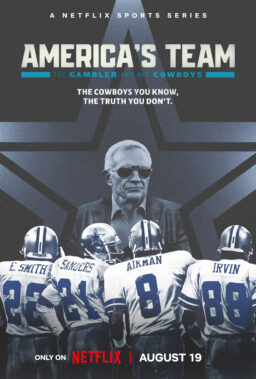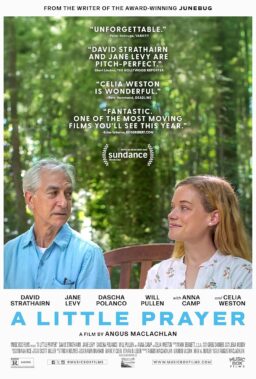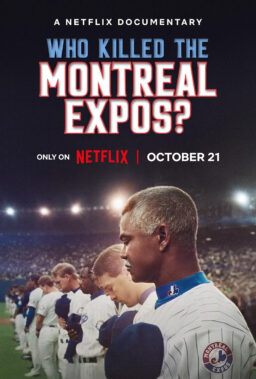To some, she was the co-star of one of the most popular sitcoms of its era and a familiar face/voice on any number of shows over the years. To others, she was a trailblazing filmmaker who became the first American woman to direct a movie that made over $100 million at the box office, a feat she would repeat for a second time just a few years later. Whichever side of the camera she was working on, Penny Marshall was a consummate entertainer who could handle everything from the broadest slapstick comedy to serious drama, and her passing today at the age of 75 from diabetes complications will hit hard with anyone who encountered her work over the years.
Born Carole Penny Marshall in 1943, she grew up in the Bronx with a father who directed industrial films and a mother who was a tap dancer. After attending the University of New Mexico for a couple of years, marrying and divorcing her first husband Michael Henry and having a daughter, Tracy, Marshall moved out to Los Angeles to try her hand at show business. After doing some commercials, she made her film debut in a bit part in “How Sweet It Is” (1968), a film written and produced by her brother Garry, who had already established himself in the business, working on shows like “The Dick Van Dyke Show.” Over the next few years, she would make appearances in such films as the biker movie “The Savage Seven” (1968), the counterculture drama “The Grasshopper” and the cult comedy classic “Where’s Poppa?” (1970) as well as such TV shows as “Then Came Bronson,” “Love, American Style” and the immortal made-for-TV movie “The Feminist and the Fuzz” (1971). She auditioned for the role of Gloria Stivic on “All in the Family” but lost it to Sally Struthers (her then-husband Rob Reiner, who she married in 1971, did land the part of Mike Stivic).
Marshall’s first big break came in 1972 when she was cast in the recurring role of Myrna, the secretary to Oscar Madison, during the last couple of years of the hit sitcom “The Odd Couple.” During and after the run of that show she turned up in any number of programs, including “The Bob Newhart Show,” “Banacek” and “The Mary Tyler Moore Show” and was a regular on the well-reviewed but short-lived comedy “Paul Sand in Friends and Lovers.” In 1975, brother Garry was working on his enormously popular sitcom “Happy Days” and had written an episode involving a couple of Milwaukee brewery workers who served as dates for Fonzie (Henry Winkler) and Richie (Ron Howard); he decided to cast her and Cindy Williams, who had appeared opposite Howard in “American Graffiti” (1973), in the roles. The byplay between the two actresses was so apparent that Garry decided to spin the two characters off into their own series. That show, “Laverne & Shirley,” debuted in 1976 and was an immediate hit that lasted for eight seasons before going off the air in 1983 (with Marshall going it alone during the final season when Williams left due to a pregnancy). Sure, the show was pretty silly and inconsequential but Marshall and Williams threw themselves into the goofball material with such heedless glee, even the sternest of viewers couldn’t help but crack a smile every now and then.

While working on “Laverne & Shirley” as an actress, Marshall developed an interest in directing, helming four episodes of the series over the years as well as an episode of “Working Stiffs,” a little-seen 1979 sitcom that co-starred then-unknowns Michael Keaton and Jim Belushi. At a time when few women were granted the opportunity to direct major studio films, Marshall caught a break when she was hired to come in and take over the production of “Jumpin’ Jack Flash” (1986) after director Howard Zieff departed shortly after filming began. The film, an action-comedy starring Whoopi Goldberg as an ordinary bank employee who becomes involved in international espionage after accidentally making contact with a British secret agent on the run from the KGB, is not especially memorable (other than the re-recording of the Rolling Stones hit that it was named after, as performed by Aretha Franklin and backed up by Keith Richards). But she managed to squeeze enough laughs out of the tired material (thanks to a game cast of comics like Belushi, Carol Kane, Phil Hartman, Jon Lovitz, her “Laverne & Shirley” co-star Michael McKean and Tracey Ullman, whose breakthrough TV variety series she would direct an episode of the next year), suggesting she might do even better if she lucked into a better script.
As “Jumpin’ Jack Flash” proved to be a moderate box-office hit, Marshall was given another chance to direct: “Big” (1988), the fantasy-comedy about a 13-year-old boy (David Moscow) who makes a wish on a mysterious carnival machine to be big and wakes up the next morning as himself, only in the body of his 30-year-old self (Tom Hanks). At the time that this film was made, there was a weird mini-wave of films in which teenagers inhabited the bodies of grown-ups and vice-versa, most of them focused exclusively on the gimmick in the broadest of comedic terms. The genius of “Big,” however, is that once she established the premise, Marshall took the story in a more realistic direction, as the now-grown kid finds herself thrown into the seemingly unfathomable worlds of corporate politics and adult relationships and reacting to them with a direct openness that was both disarming and charming. Instead of turning into the kind of grotesque or cynical fable it might have been in lesser hands, Marshall created one of the most genuinely winning fantasy films of the decade. She also helped supercharge the career of star Tom Hanks (who received his first Oscar nomination for his work here) and even inspired countless numbers of toy store visitors to emulate its most iconic scene by tapping out “Heart & Soul” on a giant keyboard, as Hanks and co-star Robert Loggia did at FAO Schwarz.
“Big” was a smash, the aforementioned first film directed by a woman to gross over $100 million, and put her in the position where she could pretty much make anything that she wanted. Although she was presumably offered countless comedies, her next film proved to be something entirely different. This was “Awakenings” (1990), a film based on the book by Oliver Sacks that told the story of a doctor (Robin Williams) who successfully administered the drug L-Dopa to a group of patients who had been catatonic for decades, and of one such patient (Robert De Niro) who first had to deal with waking up in a new time in which all of his loved ones are long gone and then with the gradual realization that his seemingly miraculous recovery is only temporary. Again, Marshall took supremely tricky material that might have been unworkable in other hands and found an emotional core that allowed viewers to relate to the story without cheapening it, and showed an increasingly deft hand with actors with the fine performances that she got from her two leads. The film proved to be a surprise success with audiences and received Oscar nominations for Best Picture, Best Adapted Screenplay and Best Actor for De Niro, although she was inexplicably passed over in the Best Director category.
Her next film, and arguably her best, was inspired by a 1987 documentary about the All-American Girls Professional Baseball League, a real-life women’s organization that was developed when Major League Baseball was threatened with a complete shutdown after America entered World War II. She put the makers of that film, Kelly Candaele and Kim Wilson, together with screenwriters Babaloo Mandel & Lowell Ganz to write what became “A League of Their Own.”

The film told of the league through the eyes of two sisters (Geena Davis and Lori Petty) who find themselves playing for the Rockford Peaches under the dubious managerial eye of Jimmy Dugan (Tom Hanks), a former star and current drunk who is nevertheless inspired by the team (whose players include the likes of Madonna and Rosie O’Donnell) to straighten up and lead them to the World Series in which the two sisters now find themselves playing on opposite teams. In telling a story that simultaneously serves as a comedy, an emotional drama about the conflict between sisters and a peek into history that had until then been all but forgotten, Marshall found herself spinning a number of narrative and emotional plates throughout and pretty much managed to make them all pay off in a movie that inspired plenty of laughs. And despite the fact that, to quote the most famous line, “There’s no crying in baseball,” the film earned its tears. Although a period film about women’s baseball might not have seemed like the basis for box-office success, the movie was one of the surprise hits of the summer of 1992, once again allowing Marshall to break the $100-million barrier. To cement its reputation as an instant classic, the movie was entered into the United States National Film Registry—ensuring its continued preservation—in 2012.

After the triumph of “A League of Her Own,” Marshall’s subsequent screen output proved to be somewhat less successful, both commercially and artistically, but she still had some interesting moments here and there: “Renaissance Man” (1994) told the story of a recently unemployed advertising executive (Danny DeVito) who found himself teaching basic literacy classes to a group of semi-literate recruits at a local Army base. The film is little more than a rehash of “Dead Poets Society,” but is perhaps somewhat notable for featuring the big screen dramatic debut from Mark Wahlberg; “The Preacher’s Wife” (1996) was a theoretically unnecessary remake of the holiday classic “The Bishop’s Wife” (1947) that featured Denzel Washington as a suave angel who appeared in New York to help a struggling pastor (Courtney B. Vance) and his wife (Whitney Houston) make a go of their church in the face of personal and financial difficulties. Although not a patch on the original, it proved to be reasonably entertaining thanks to the charming performances from the three leads (with Houston delivering arguably the best performance as an actress). Her final directorial effort, “Riding in Cars with Boys” (2001), told the inspirational true story of a woman who went from being a teen mother to eventually earning her master’s degree. The film contained performances from the likes of Drew Barrymore, Brittany Murphy, and James Woods that were engaging enough to make you forget how formulaic it all was.
Although her career in front of the camera during this time was largely limited to small roles, two appearances stand out: In “Hocus Pocus” (1993), the weird Halloween kids movie that has gone on to become a cult favorite for reasons that continue to elude me, she turns up alongside brother Garry as a married couple (see what I mean about it being weird) who are visited by the three witches who assume that he is the Devil and she is Medusa in one of the few scenes that demonstrates any real comedic invention. In Albert Brooks’s underrated satire “Looking for Comedy in the Muslim World,” she plays herself in a hilarious opening scene where she perfunctorily interviews Brooks (playing himself) for the lead role in a remake of “Harvey” and cannot quite disguise her complete lack of interest in him. Perhaps most notably, she has gone down in the history books as the first celebrity to lend their voice to a character on “The Simpsons,” playing the nefarious Babysitter Bandit in an episode meant to serve as the show’s premiere until technical difficulties caused it to run as the finale of that first season.
Besides her success as a filmmaker and as an actress, Marshall received a number of other accolades over the years. She received three Golden Globe nominations for her work on “Laverne & Shirley,” was one of the recipients of the Elle Women in Hollywood Icon Awards in 1997 alongside Meryl Streep, Jane Campion and Laura Ziskin and received a star on the Hollywood Walk of Fame in 2004. In 2012, she published her memoir My Mother Was Nuts, in which she recounted her long and groundbreaking career as an actress and a filmmaker, thoughtfully filling that book with plenty of amusing anecdotes about the people she met along the way. It’s a work that’s as funny, charming, unpretentious, and entertaining as the woman who wrote it.












